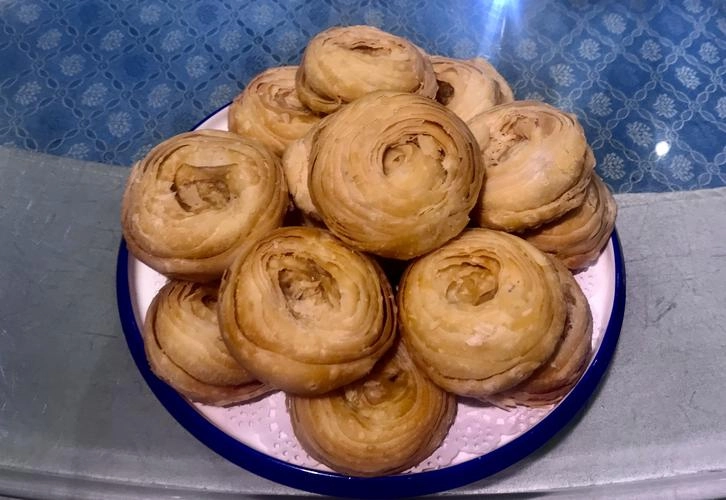The Legendary Da Jiu Jia: A Culinary Gem from Shouxian, Huainan
Introduction:
As a culinary enthusiast and practitioner, I am always on the lookout for dishes that not only tantalize the taste buds but also carry a rich historical and cultural significance. One such dish that has captured my attention is the Da Jiu Jia, a delicacy from Shouxian, a county under the jurisdiction of Huainan City in the province of Anhui, China. This dish is not just a culinary delight but also a testament to the region’s history and culinary prowess. Let’s delve into the origins, cultural background, ingredients, and the unique characteristics that make Da Jiu Jia a true gastronomic treasure.
Origins and Cultural Background:
The name “Da Jiu Jia” translates to “Great Rescue Chariot,” and it is said to have played a pivotal role in the life of Zhao Kuangyin, the founder of the Song Dynasty. According to legend, during a critical battle, Zhao Kuangyin was saved from a dire situation by a chariot that arrived just in time, hence the name. This dish is believed to have been the sustenance that fueled his forces during the campaign, and its significance has been passed down through generations, becoming an integral part of Shouxian’s culinary heritage.
Ingredients and Preparation:
The Da Jiu Jia is a masterpiece of pastry art, characterized by its intricate layers of flaky pastry. The primary ingredients include high-quality wheat flour, lard, and water. The dough is meticulously prepared by combining flour and lard, which is then folded and rolled out multiple times to create the signature layers. This process requires skill and patience, as each fold and roll contributes to the final texture and flakiness of the pastry.
Taste and Texture:
The Da Jiu Jia is known for its crisp exterior and the soft, buttery layers within. Each bite releases a symphony of textures, with the initial crunch giving way to a tender, melt-in-your-mouth experience. The subtle hint of lard adds a rich depth to the flavor profile, making it a delight for those who appreciate the interplay of flavors and textures.
Visual Description:
The Da Jiu Jia is a visually stunning dish, with its golden-brown hue and the intricate pattern of its flaky layers. When freshly baked, the pastry puffs up, creating an alluring, puffed appearance that is both inviting and appetizing. The layers are visible, resembling the pages of a book, each one a testament to the artisan’s skill.
Representative Dishes and Cuisine:
While the Da Jiu Jia is a dish in its own right, it can also be used as a base for a variety of other dishes. It can be filled with sweet or savory fillings, such as red bean paste, meat, or vegetables, transforming it into a versatile component of Shouxian’s culinary repertoire. Its flaky texture complements a range of flavors, making it a favorite among both locals and visitors.
Culinary Characteristics:
The Da Jiu Jia is a shining example of Anhui’s culinary tradition, showcasing the region’s expertise in pastry-making. It is a dish that embodies the非遗技艺 (intangible cultural heritage), passed down through generations and preserved as a cultural treasure. The art of creating the Da Jiu Jia is not just about food but also about preserving the stories and traditions that are woven into every layer of the pastry.
Conclusion:
The Da Jiu Jia from Shouxian is more than just a food item; it is a culinary narrative that connects us to a rich history and a community’s heritage. As a food practitioner, I am honored to share this story and encourage others to explore the flavors and traditions that make dishes like the Da Jiu Jia a true culinary gem. Whether enjoyed on its own or as part of a larger meal, the Da Jiu Jia is a testament to the enduring legacy of Anhui’s culinary arts.
